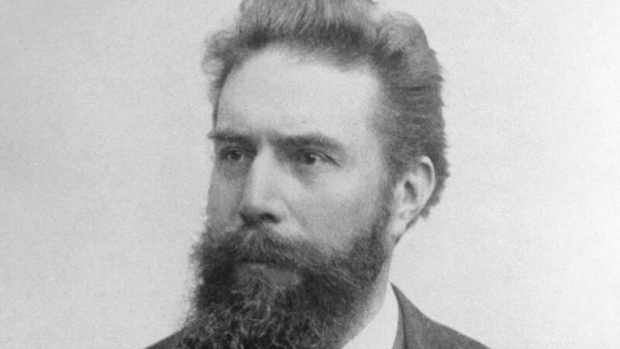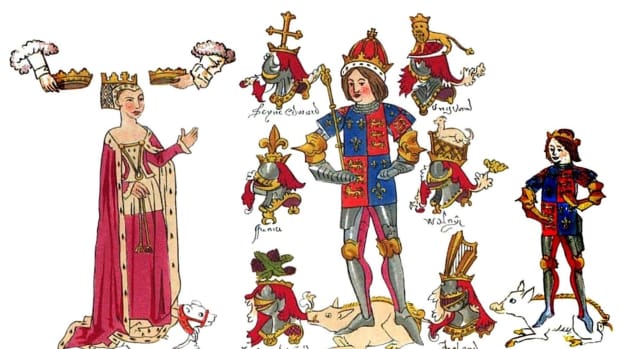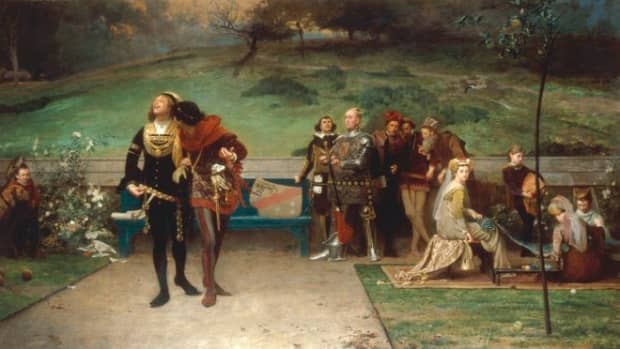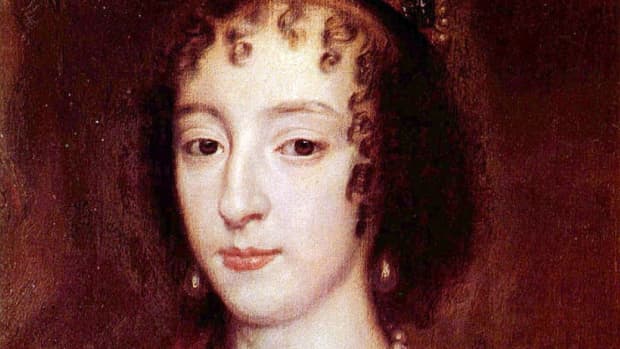Anne Neville, the Forgotten Queen and Wife of Richard III
Who Was Anne Neville?
Researching Anne Neville's story is like trying to complete a jigsaw that you don't have all the pieces for. She was a queen, wife, daughter and mother during the tumultuous Wars of the Roses. Yet there are no accurate visual representations or vivid descriptions of her. The information we do have indicates that her 28-year-long life was crammed full of power play, prestige and personal losses.

The east face of Warwick Castle from Canaletto's 1752 painting. Anne was born here in June 1456.
Wikipedia PD.
Wars of the Roses
Anne Neville was born on the 11th of June 1456 at Warwick Castle. Her parents were the powerful and ambitious Richard Neville, the 16th Earl of Warwick (1428–1471), and his wife Anne Beauchamp (1426–1492). She was their second daughter. Isabel (1451–1476) was five years older. The Earl and Countess had no more children.
The Earl was later known as The Kingmaker because of his pivotal role in the Wars of the Roses, firstly on the York side against Lancastrian king Henry VI (1421–1471). His nephew Edward of York (1442–1483) was proclaimed King Edward IV in 1461. Secondly, Warwick's defection to the Lancastrian cause delivered him to death in the spring of 1471.
Anne Neville was a first cousin of Edward IV and his younger brothers George, Duke of Clarence (1449–1478) and Richard, Duke of Gloucester (1452–1485).
Who Was Anne to Marry?
Most of Anne’s early years were spent at Middleham Castle, another of the Nevilles' residences. It was here that Anne and Isabel grew familiar with royals George and Richard, who were honing their etiquette and battle skills at the castle under the earl’s guidance. Early on in their lives, plans were made for George to marry Isabel and for Anne to marry Richard. Isabel married her royal in 1469.
Disillusioned with Edward, Warwick switched to the Lancastrian side and promised Anne to Henry VI and Margaret of Anjou’s only son, Edward of Westminster, Prince of Wales (1453–1471). The marriage ceremony was delayed until Warwick realised his scheme to restore Henry VI to the throne.
Edward and Anne were married in December 1470 at Angers Cathedral in France and she became the Princess of Wales. Little did she realise that within months her father and her husband would be dead. Edward IV launched a series of counterattacks. Warwick died at the Battle of Barnet in April 1471 as he tried to flee the battlefield. Edward of Westminster, Prince of Wales was slain at the Battle of Tewkesbury on the 4th May 1471.
Although the legend has it that Richard, Duke of Gloucester dispensed with Henry VI, this was probably on his orders rather than at his hand. The official story was that Henry VI died from melancholy whilst held in the Tower of London.
Richard and Anne
A dispute broke out between George, Duke of Clarence and Richard, Duke of Gloucester. Richard wanted to marry Anne Neville but George opposed the match primarily because he wanted the Warwick properties for himself. If Richard made a claim to them after marrying Anne, George’s portion of the spoils would be less. It’s believed that George went to the extraordinary lengths of placing Anne, whom he was monitoring on Edward IV's behalf, in a shop and he dressed her as a servant so that Richard could not find her, let alone marry her. Richard did find her though, at the Church of St. Martin’s Le Grand in the City of London.
Recommended
Richard and Anne were married in the spring of 1472, after George, Duke of Clarence was awarded the lion's share of the Warwick inheritance. Pope Sixtus IV (1414–1484) was consulted for permission, as Anne’s marriage to Richard’s Lancastrian cousin meant that papal approval was necessary for her to marry another family member. The true date of the wedding ceremony is not clear but it definitely took place at the Palace of Westminster, probably in early to midsummer. Anne was the new Duchess of Gloucester.
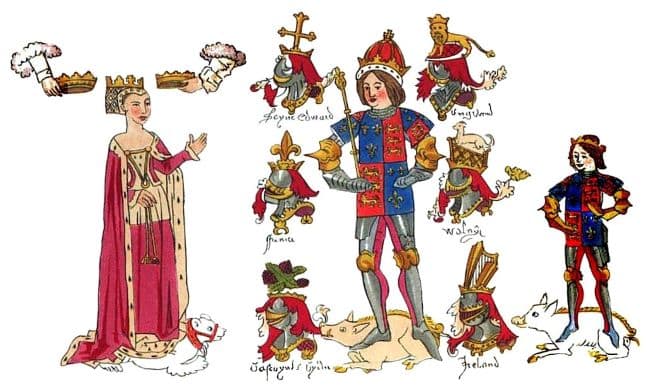
Detail from the Rous Roll. King Richard III with Anne Neville and Edward of Middleham, Prince of Wales.
The Rous Roll, 1483 John Rous - Digitized image, Add MS 48976, British Library.
A Crown
In 1476, Isabel, Duchess of Clarence, died a couple of months after giving birth to her fourth child. During 1477 and into 1478, George, Duke of Clarence repeatedly asserted his opinion that she had been murdered. His choice of a new bride was not approved by Edward IV. George grew unstable and involved himself in a rebellion to overthrow Edward. As this constituted treason, the king had him privately executed. An unproven but intriguing rumour spread that he had met his death in a vat of Malmsey wine.
Clarence’s surviving children, Margaret and Edward, were excluded from the succession and were placed under Anne Neville’s care for a while. Margaret and Edward were executed by Henry VIII and Henry VII respectively for attempting to realise their claims to the throne.
When Edward IV died in 1483, his son Edward became king with Richard, Duke of Gloucester as Lord Protector. Edward V and his brother Richard were held at the Tower of London where they disappeared. Richard claimed that Edward IV’s marriage to Elizabeth Woodville, the prince's mother, was bigamous because Edward was already married to Lady Eleanor Talbot (1436–1468), the daughter of the 1st Earl and Countess of Shrewsbury. It was commonly believed they had died in mysterious circumstances and at their uncle’s hand or instruction.
Richard became Richard III and Anne was his queen consort. Their coronation was held on 6th July 1483 at Westminster Abbey.

Edward V and Prince Richard, The Princes in the Tower.
The sons of Edward IV of England by Pedro Américo
Tragedy
In late 1473, Anne had borne the couple’s only child, Richard's legitimate heir. Edward of Middleham was raised at Middleham Castle. He was made Prince of Wales in 1483. Tragically, Edward died in the spring of 1484 as his parents travelled to visit him at the castle. They were heartbroken and Anne fell ill. She never recovered. She died on the 16th of March 1485, most probably from tuberculosis. She was buried at Westminster Abbey. Although Richard was said to be grief-stricken, there were rumours that he had poisoned Anne so that he could marry Edward IV’s daughter (his own niece) Elizabeth of York (1466–1503.)
In the wake of Anne’s demise, Richard III was defeated and killed at the Battle of Bosworth Field on 22nd August 1485. Henry Tudor ascended to the throne as Henry VII. Elizabeth of York married Henry on 18th January 1486.
Anne Neville's mother, Anne Beauchamp, 16th Countess of Warwick, survived until the 20th of September 1492. She died in obscurity.
We'll never know how involved Anne Neville was in decision-making in her private and queenly roles. The scenes in which she performed changed often, loyalties shifted, and legitimacy and integrity were under scrutiny. Perhaps in her 28 years, she saw more "life" than many of us would wish to encounter.
Sources
- Anne Neville's Final Months by Alex Taylor - The Tudor Society
An article on Anne Neville, queen consort of Richard III and daughter of Richard Neville, 16th Earl of Warwick and a man known as "the Kingmaker". - Anne Neville - A woman of "gracious fame"; (Part one) - History of Royal Women
- Anne Neville - A woman of "gracious fame"; (Part two) - History of Royal Women
- Anne Neville, Queen of England | Unofficial Royalty
- Edward of Middleham, Prince of Wales | Unofficial Royalty


